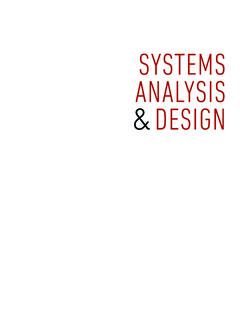Transcription of 5 Professional Manners Etiquette and - Pearson
1 Monkey Business Images/shutterstockIt is important to practice Professional Etiquette when assisting patients in person and on the phone, as well as when working as part of a and Professional 5420/12/18 9:05 PM The Significance of Etiquette 55 INTRODUCTIONThe Significance of EtiquetteEtiquette generally refers to the various Manners and behaviors prescribed by and observed in social life. How do you carry yourself? How do you portray your work ethic? How can others see that you are committed to your work and concerned about the welfare of patients and customers? These traits are all categorized within the context of your personal Etiquette . It speaks to others about you in many ways: how you work, whether you genuinely care, whether you are a committed worker, and so on. You can show utmost respect for oth-ers and professionalism through your personal set of Manners , and it is crucial to recognize which Manners , habits , and gestures are not acceptable in any Professional setting, even while you are a student.
2 Every person has his or her own unique set of Manners that includes positive and negative (or unfavor-able or unprofessional) aspects. Sometimes socially unacceptable behavior is perceived as acceptable. Many people, even those who are highly educated or have a long history of successful work experience, may benefit from tweaking their Manners a bit to optimize their Professional have been permanently dismissed from their training sites for behaving in an unacceptable manner, as well as for their attitude issues. Thus, This chapter highlights the importance of using Professional Manners and avoiding unprofes-sional ones. Manners , and the lack thereof, say much about a person and can communicate both favorable and unfavorable characteristics. Several aspects of Etiquette are well worth the attention of all allied health students entering the health care industry. Once identified, each point of Etiquette is described in light of how it communicates various messages at the practicum site.
3 This discussion also demonstrates how correcting these tendencies can contribute to Professional development while you avoid behavior-related pitfalls during the practicum. The chapter concludes with Self-Prep Questions, a Role-Play Scenario, and a Readiness OBJECTIVES Identify the general meaning of the term Etiquette . Identify the importance of appropriate eti-quette in the allied health practicum. Identify at least three aspects that your pos-ture can communicate. Name at least six additional Manners that affect how others view you professionally. Explain the appropriate way(s) to deal with each of those six additional Manners . Name at least four distracting behaviors that affect your Professional demeanor. Explain at least one possible solution for each of those four distracting behaviors. Identify five ways to retain a clean image within social 5520/12/18 9:06 PM56 CHAPTER 5 7 Etiquette And Professional Manners this entire chapter is devoted to the single topic of Etiquette .
4 Both acceptable and unacceptable Manners are discussed. Self-presentation through posture, verbal Manners , and Professional language is analyzed, and basic tips on behavior are particular aspects of your character say much about you, your confidence, abilities, and interests. For example, I worked with a student who was dismissed from two different sites for the same reasons. She had no prob-lems arriving on time or doing as she was instructed, but her unprofessional demeanor and Etiquette were more than what the managers at the two practi-cum sites were willing to tolerate. In this case, the main issues were not smil-ing (appearing grumpy), waiting to be told what to do (not taking initiative), slouching when sitting, leaning when standing, chewing gum, and showing an overall disinterest in learning. This combination communicated that this student was not motivated, did not care about the staff or patients, and did not appear to have the potential to be a productive worker.
5 The site managers indicated that this style simply does not work in a health care summary, even if your skills and techniques are superb in the class-room, personal aspects matter during the practicum just as much as your tech-nical competencies. In addition, it is important to pay attention to Etiquette as you prepare for job interviews it determines much of the interviewer s first impression of for Allied Health Student-Trainees and ProfessionalsSeveral aspects of Etiquette that will be important to focus on during your practicum include the following: Posture Verbal Manners Word choic e Avoiding distracting behaviorsPostureYour posture says much about you. It reflects your confidence level and your attitude, as well as your interest in what is happening around you. If you slouch in chairs or lean frequently on desks and countertops, do you think the people around you will perceive you as a confident and effective or produc-tive worker?
6 Actually, they will wonder what is wrong with you and may even think you are experiencing physical discomfort or pain. Patients will think like that, too, and this will have important implications. Patients need to feel that they are being cared for by a high-quality and confident health care team, not by people who drag themselves around and twiddle their thumbs or who 5620/12/18 9:06 PM Etiquette for Allied Health Student-Trainees and Professionals 57appear not to know what is going on. Patients and others who have business at the practicum site are more comfortable and satisfied with staff members who show interest, demonstrate care, and carry themselves poor or negative attitude can often lead a person to slouch, and the look of slouching or dragging oneself about tends to repel people, especially if this posture is a chronic habit. Typically, this posture also reflects boredom, unproductiveness, and even lack of a work is a general correlation between attitude and posture (of course, with the exception of any medical condition affecting the spine/vertebrae).
7 Thus, changing one s posture comes more easily to those who make a con-scious effort to change the underlying perceptions and attitudes that originally led to persistently slouching and leaning. (To review the importance of atti-tudes and perceptions, see Chapter 4.)Disinterest in performing everyday duties and learning as you work can easily convince others, including facility managers and physicians, that you may not be truly committed to your chosen career field. As a student-trainee, demonstrating a lack of interest in your practicum will not serve you well when it comes to your evaluation by the site manager or the opportunity to initiate Professional contacts and relationships to jump-start your career. It is very important to assess your behavior to ensure that you actually are com-municating what you want to about yourself during the MannersThe level of professionalism you display with your verbal Manners and associ-ated tactics also affects how others view you professionally.
8 These Manners and tactics include how you speak to others, your listening skills, ability to apologize, manner of addressing conflicts, and generally how you treat others. Consider the following specifics: Using Manners as a mechanism of showing a favorable attitude was discussed in Chapter 4. The use of good Manners should become natural for Professional people hoping to be successful. It shows consideration and respect for other staff members, customers, and patients. Speaking like a Professional practitioner is another direct indicator of how Professional you are in your field. This skill involves understanding and applying vocabulary pertaining to your specialty and avoiding the use of unprofessional fillers, such as uh, um, and like, while communicating. (See the next section for examples of casual and improper phrases and their Professional translations.) Keep a medical terminology book or medical dictionary handy so that you can easily check your use of Professional medical terms.
9 Your work team and patients form a more respectful perception of you and are confident in you when you speak 5720/12/18 9:06 PM58 CHAPTER 5 7 Etiquette And Professional Manners During the communication process, it is of utmost importance to steer clear of any tendency to interrupt when someone else is speaking. This tendency is sometimes irresistible, such as when you are convinced that the message being communicated merits correcting. Correcting or adding to somebody else s words or comments must be done tactfully. Never correct a team member or engage in a confrontation in the presence of a patient or customer. It is a known fact that not a single person is perfect, and therefore, if you happen to make a mistake or handle something incorrectly, admit your fault and apologize. Also, state your intention of not making the same mistake again and, if possible, thank the person who pointed out your error. We tend to despise people who constantly correct us, but these corrections and what we learn from them build us professionally.
10 When addressing conflicts, the best approach is to address them as situation related rather than person related. In other words, focus on the problem s aspects and seeking a solution rather than on anyone s faults and communicating your opinions to others. Engaging in the latter is a sign of immaturity and lack of professionalism. Also, addressing conflict from the situation-related viewpoint helps in reducing or eliminating further interpersonal issues related to the issue at hand. A reliable and relevant rule of thumb, often referred to as the golden rule, is to treat others the way you wish to be treated. This means extending courteousness, forgiveness, encouragement, empowerment, compliments, recognition, and the like to others at the appropriate times. Aren t these what you hope others will extend to you?Word ChoiceIt is important to employ grammatically proper, Professional , and polite language in any Professional setting, especially in allied health professions.










